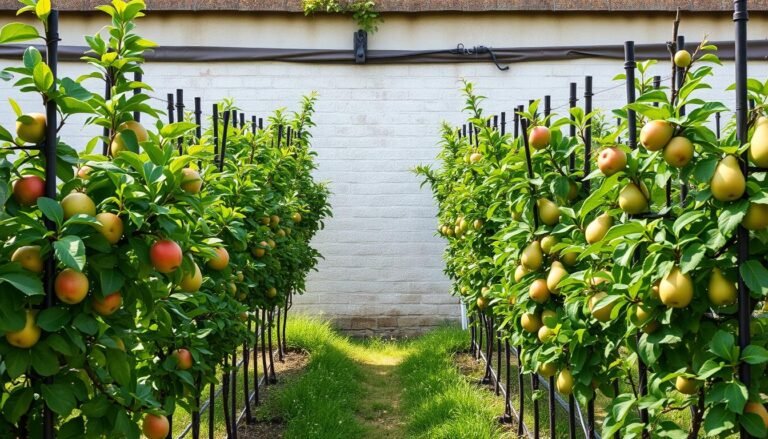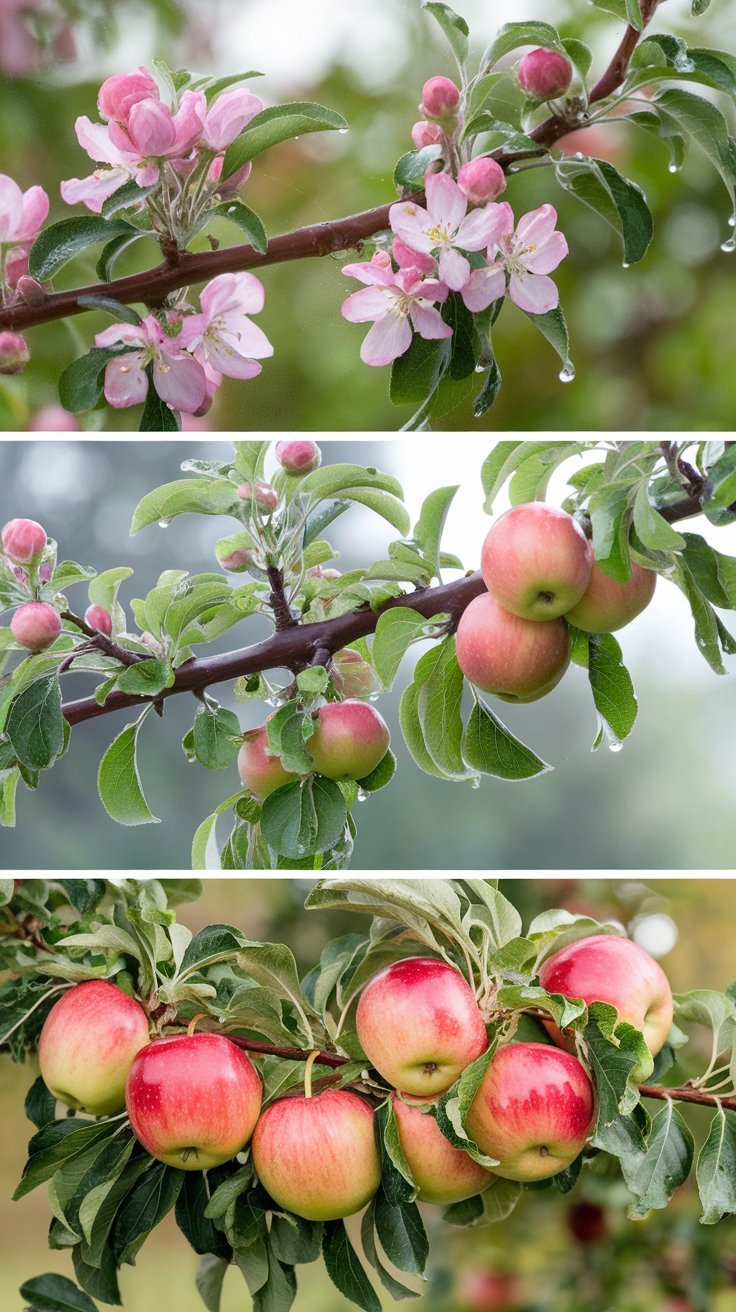How to Know When Your Melons Are Ready to Harvest

Some of the links on this website are affiliate links, which means that if you make a purchase through these links, I may earn a small commission at no additional cost to you. As an Amazon Associate, I earn from qualifying purchases. I only recommend products I genuinely trust and believe will bring value to my readers. Also, some of the content was created with strategic use of AI tools. For more information, please visit the Privacy Policy page. Thank you for supporting my blog and helping me continue to provide valuable content.
A guide to picking the sweetest fruit at just the right time
There’s nothing like the taste of a perfectly ripe, sun-warmed melon straight from the vine. But how do you know when it’s time to pick? I’ve definitely made the mistake of harvesting too early—cut into a cantaloupe that smelled heavenly only to find it crunchy and bland inside. Or worse, waited too long and found the bottom rotting where it touched the ground. 
Whether you’re growing watermelon, cantaloupe, honeydew, or something more exotic like Charentais or Canary, this guide will walk you through the signs of ripeness for each variety, how to grow them better, and how to savor every last bite.
 How to Grow Melons for Maximum Sweetness
How to Grow Melons for Maximum Sweetness
Melons are sun-lovers and heavy feeders. For that juicy flavor we all crave, the key is consistent watering, rich soil, and full sun. Here are some top tips from my Zone 9 garden:
- Soil prep: Add aged compost and a scoop of organic bone meal or worm castings before planting.
- Spacing: Give each melon plant at least 3–4 feet to sprawl. Trellising works for cantaloupes and smaller melons!
- Watering: Deep water 2–3 times a week. Cut back slightly once fruit starts maturing to concentrate sugars.
- Mulch: Use straw or wood mulch to keep soil cool and fruits off the ground.
- Pollination: Melons need bees! Plant some nearby flowers or hand-pollinate if needed.
Want to learn more? Check out our guide on How to Boost Flower Growth Naturally to attract those pollinators!
 Quick Reference Chart: Melon Ripeness Signs by Type
Quick Reference Chart: Melon Ripeness Signs by Type
| Melon Type | Skin Color | Stem/Vine Clue | Touch Test | Smell | Sound |
|---|---|---|---|---|---|
| Cantaloupe | Beige/tan netting, no green | Slips easily from vine | Slightly soft at blossom end | Sweet, floral aroma | Not needed |
| Watermelon | Deep, uniform color | Tendril nearest melon is brown/dry | Slightly rough skin, matte finish | Not reliable | Deep, hollow “thunk” |
| Honeydew | Creamy yellow color | Stem may loosen, not fully slip | Slightly soft at blossom end | Lightly sweet | Not reliable |
 Cantaloupe (aka muskmelon)
Cantaloupe (aka muskmelon)
Cantaloupes practically shout when they’re ripe.
Signs of ripeness:
- Beige/tan netting on the rind, no green underneath.
- Fruit “slips” off the vine with a gentle nudge.
- Strong, musky, sweet scent at the stem end.
- Blossom end has a tiny bit of give.
Southern Soil Sunshine Growing Tip: Cantaloupes love heat. Add a black landscape fabric early on to warm the soil and get a head start.
Try this: Garden-to-Table Cantaloupe Smoothie
 Watermelon
Watermelon
Watermelon takes a bit more detective work, but it’s worth it.
Look for:
- Closest tendril turns brown and dries.
- Belly spot turns creamy yellow.
- Rind becomes dull/matte.
- Hollow “thunk” sound when tapped.
SSS Growing Tip: Plant watermelons in mounds for good drainage and warmth. Use drip irrigation to prevent powdery mildew.
Product pick: Soaker hose irrigation kit — keeps moisture consistent and cuts down on watering time.
 Honeydew
Honeydew
Honeydews are a little secretive, but the signs are there.
Ready to pick when:
- Skin changes from green to creamy yellow.
- Slight give at blossom end.
- Waxy or tacky skin texture.
- Faint sweetness when sniffed at the stem.
SSS Growing Tip: Give honeydew vines lots of airflow to avoid fungal issues. Prune back early growth to encourage larger fruit.
Need pruning advice? Read How to Train and Trellis Tomatoes
 Other Melons (Bonus!)
Other Melons (Bonus!)
| Melon | Ripe Signs | Notes |
| Charentais | Strong scent, tan skin with subtle ridges, slips easily | Best grown in hot, dry summers |
| Galia | Yellow netted skin, floral scent, slips easily | Cross between cantaloupe and honeydew |
| Canary | Bright yellow skin, blossom end gives slightly | Firm even when ripe, mild flavor |
 Harvesting & Storage Tips
Harvesting & Storage Tips
Harvest in the morning when fruit is cool.
Use clean pruners or a sharp knife for non-slip varieties.
Refrigerate ripe melons immediately for best texture.
Store whole melons at room temp if uncut; chill once sliced.
Pro tip: Use these stackable produce bins to keep your fridge tidy and extend melon freshness!
 What to Do With Your Harvest
What to Do With Your Harvest
You picked the perfect melon… now what? Here are two of our favorite ways to use fresh-picked melons:
 Minty Melon Salad
Minty Melon Salad
- Cantaloupe, honeydew, and watermelon cubes
- Fresh mint
- Lime juice
- Tiny pinch of sea salt
Toss and serve cold. So refreshing for summer brunches!
 Frozen Melon Creami Treat
Frozen Melon Creami Treat
Use your Ninja Creami to blend watermelon puree, coconut milk, and a dash of honey into a dreamy sorbet.
Want more? Check out our Garden-Inspired Ice Cream Flavors!
 Final Thoughts from My Garden
Final Thoughts from My Garden
Growing melons is one of those garden joys that brings me back to barefoot summers and sticky chins. The first time I picked a watermelon that thumped just right—and it actually was perfect—I did a happy dance right there between the rows.
Don’t worry if you miss the mark a few times. You’ll get better each season. Melons teach us patience, observation, and how to enjoy the sweet rewards of waiting.

Have a melon success (or fail) story to share? I’d love to hear it! Drop it in the comments or tag me on Instagram @SouthernSoilSunshine with your juicy harvests.








